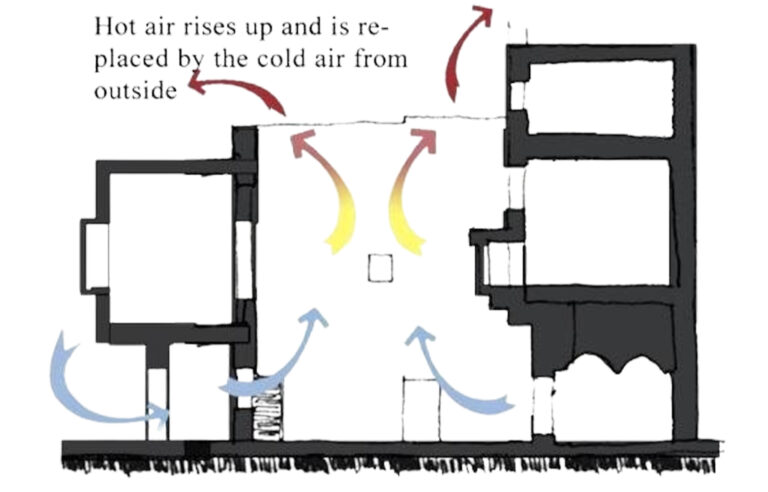Top 7 Skills You’ll Learn in an Interior Design Course...
Read MoreDecoding the Logic Behind Ancient Architectural Wisdom in Modern Homes
As Indian cities expand skyward and smart homes become the new normal, there’s a quiet revolution taking place—one that looks backward to move forward. A growing number of architects and homeowners are turning to Ancient Indian Architectural Wisdom to build homes that are not just beautiful, but also energy-efficient, climate-smart, and deeply human in scale.
Long before air-conditioners and glass facades, Indian homes were designed to beat the heat and stay comfortable all year round. Think of the cool courtyards of a Kerala tharavadu, or the thick mud walls of a village home in Madhya Pradesh. These weren’t just cultural quirks—they were ingenious climate responses. Central courtyards acted like natural air-coolers, allowing hot air to escape upwards and pulling cooler air through shaded passageways. In today’s world of rising temperatures and high electricity bills, these passive cooling techniques are being reimagined in modern homes—from inner atria to ventilated roof systems.

Air movement inside a Courtyard
Sunlight and airflow were also crucial to the planning of traditional Indian homes. Vastu Shastra, India’s age-old architectural science, emphasized directional alignment—not only for spiritual energy, but for practical benefits like harnessing morning sun or avoiding harsh afternoon glare. While modern interpretations often skip the rituals, the underlying logic of orientation is being applied with a fresh, functional lens. Architects today strategically place windows, balconies, and openings to maximize daylight and cross-ventilation, reducing the need for artificial lighting or mechanical cooling.
Materials, too, tell a story. Traditional Indian homes used what the land offered—terracotta tiles, lime plaster, bamboo, and laterite stone. These materials were eco-friendly, locally available, and helped regulate indoor temperatures naturally. Today, as conversations around sustainability intensify, there is a renewed interest in these humble building blocks. From rammed earth walls to reclaimed wood beams, modern homes are blending the rustic charm of old materials with sleek, contemporary aesthetics.

Bamboo and clay tile roof, and Laterite wall cladding
One of the most fascinating aspects of traditional Indian homes was their flexibility. A single verandah could be a reading nook by day, a family gathering spot by evening, and a sleeping area during summer nights. Homes grew and adapted with the family, without needing rigid blueprints. This spirit of adaptability is making a comeback, especially in urban apartments where space is at a premium. Movable walls, foldable furniture, and hybrid spaces for work and leisure echo the fluidity of our ancestral homes.
And then there’s the sense of community. From shared courtyards in Rajasthan’s pols to the interconnected homes in Ladakh’s villages, Indian architecture fostered connection. Today, in an age of isolation, co-living spaces, community gardens, and rooftop commons are reviving that collective spirit in modern housing complexes.
In essence, ancient architecture wasn’t just about aesthetics—it was a masterclass in sustainable living, crafted over centuries of observation and experience. By borrowing its logic and reimagining it for today’s needs, we can build homes that are not only modern but also mindful—spaces that breathe, adapt, and connect.
IVS School of Art and Design doesn’t just pay lip service to its guiding values; it incorporates them into every lesson. Contextual design, vernacular craftsmanship, and sustainability sit side by side in the curriculum, pushing students to fuse India’s enduring insights with the sharp lines of modern practice. Workshops grounded in heritage, weather-sensitive exercises, and live briefs let emerging interior designers and architects see how age-old ideas can light up tomorrow’s homes. In these studios, the heartbeat of ancient craft pulses on in fresh forms and bold colors- walls, textiles, even furniture share that remix story.

Ar. Vrinda Singh
With more than 15 years as an architect, I specialize in interior and landscape design. I develop practical and aesthetically pleasing spaces for residences and commercial offices. As an educator, I have guided several designers and keep track of advancements in the field.
Latest Blog's
The Rise of Applied Art in the Digital Era: Bridging Tradition with Technology
The Rise of Applied Art in the Digital Era: Bridging...
Read MoreHow Interior Architecture & Design Courses are Shaping the Future of Sustainable Spaces
How Interior Architecture & Design Courses are Shaping the Future...
Read MoreMastering 3ds Max in 2025: The Ultimate Tool for Interior Designers, Architects & 3D Artists
Mastering 3ds Max in 2025: The Ultimate Tool for Interior...
Read More




